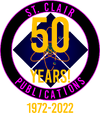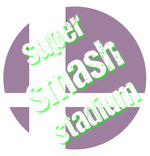
|
This article is a production of St. Clair Publications Do not edit without the permission of User:Alexs23743 unless you are correcting spelling or grammar errors, a bad translation, or an egregious factual error. |
| San Fernando Valley (SSS) | 
|
|---|---|
| Home Universe: | St. Clair Publications |
| Canon Debut: | The Valley Guys, TV series, 2005 |
| Character that debuted with it: | NES Mario |
| Item that debuted with it: | Fake Smash Ball |
| Assist Trophy character that debuted with it: | Adam Malkovich |
| Poké-Ball Pokémon that debuted with it: | Slowbro |
| SSS Debut: | January 10, 2005 |
| Crate/Barrel Type: | Christmas presents |
| Previous Stage to Debut: | Franklin County High School |
| Next Stage to Debut: | Mushroomy Kingdom |
| Music: | |
| A live stream of WSLQ-FM and/or whatever 1970's, 1980's, "8-bit"-sounding, or Vaporwave music St. Clair Publications can get its hands on (including The Weeknd and Dua Lipa in more recent playings). | |
| In a canon Smash game? | no |
The San Fernando Valley is an active stage on Super Smash Stadium. Debuting halfway through Season 33 solely to promote another show by St. Clair Publications (see #In its own universe below), it's outlived that show by an order of magnitude and is the 99th new stage to debut overall.
Stage overview[]
An almost Onett-esque stage billed as taking place in front of a shopping mall in the Los Angeles area (originally billed as the Sherman Oaks Galleria, which had gone defunct by the time the level debuted). The stage is completely flat, with walk-off side kill zones. Also, every 15 seconds, cars whiz by, doing about the same stuff they'd do on Onett; this is the highest frequency among all stages with cars.
The big draw of the stage comes from its retro aesthetic: every character who fights on this stage, including Poké-Ball Pokémon and Assist Trophies, is rendered as an 8-bit sprite. If they actually existed in the NES or Game Boy (Color) eras, their original sprite will typically be used, with the following exceptions:
- Mario and Luigi: They assume their Super Mario Bros. 2 forms so as not to be confused with NES Mario.
- Paper Mario: He assumes Mario's Super Mario Bros. 3 form for the same reason.
- Sheriff: Sheriff's appearance on SSS differs so drastically from his original game that a new sprite had to be created.
- Koopa Troopa: Koopas walked on four legs in the NES years, so Koopa has to use a "de-make" of his Super Mario World 1 sprite.
- Ganondorf: "Ganondorf" didn't officially exist until LZ: Ocarina of Time.
- The Links are a filthy hot mess: Adult Link appears in his Zelda 2 style, Young Link in the Zelda 1 style, and Toon Link as some mishmash of the Game Boy (Color) Links.
- All Pokémon from the first five generations use partially custom sprites due to them being mostly static images in those games. Only Pokémon Stadium and its successors, as well as Generation 6 on, have SSS-worthy sprites. (The Generation 1 Pokémon also use their extremely ugly sprites from the original Japanese Red/Green!)
Changes[]
None.
In its own universe[]
At the time of the stage's creation, Alex had something of a fascination with the movie Valley Girl, as well as its associated Frank Zappa song released a year prior. This eventually led to The Valley Guys, a "successor" to Full of Clues (itself based on Clueless, VG's "spiritual successor") which debuted 14 days later and ran until the end of its second season in 2007. This is why the stage has its NES aesthetic: Valley Girl the movie was released in 1983, Valley Girl the song in 1982.
The phrase "Valley Girl" comes from the San Fernando Valley. It's believed to have originated in surfer culture there.
While, since the end of The Valley Guys, the stage has been modernized somewhat to reflect the modern San Fernando Valley (and/or Southern California in general bar the occasional reference to Back to Coolsville, which takes place in the same continuity), the 1980's aesthetic has largely been kept. With the rise of Vaporwave, this stage has gained a cult following among SSS's fandom.
In other languages[]
| Language | Name | Meaning |
|---|---|---|
| Spanish | El Valle de San Fernando (originally "El Valle de Santa Catalina de Bononia de los Encinos", when CA was part of Mexico) (also, "Mujer del Valle") |

